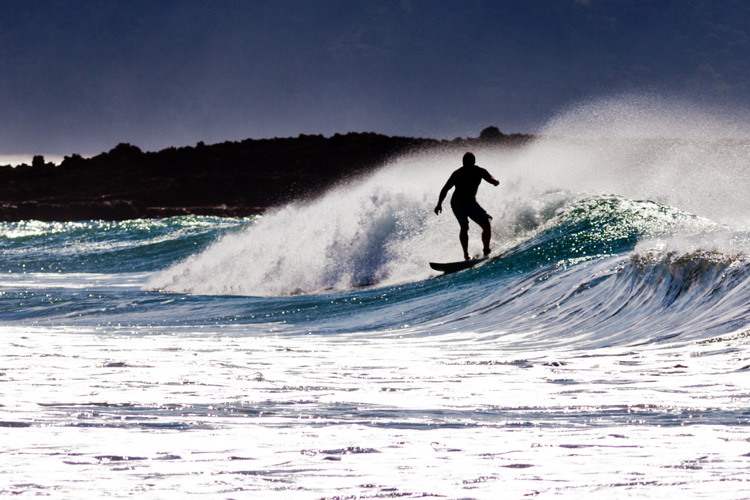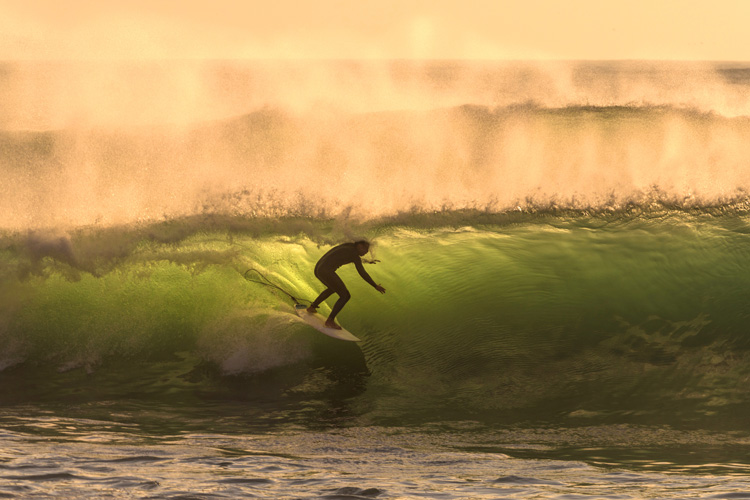The good news is that secret surf spots will never die. Why? Because man-made intervention creates new hidden waves, Nature changes sandbanks, and isolated surf breaks are constantly emerging. But how can we keep our surf spots secret?
Everyone wants a piece of the treasure.
Surf explorers, surf media professionals, pro surfers, fully-sponsored free surfers, and even the average Joe chase the dream of surfing undisclosed, classified surf spots where every wave peels for five miles.
The worst enemy of a secret spot is word-of-mouth. But should we keep perfect, hidden surf breaks in obscurity?
Or must we embrace the Multimedia Age in which everything is shared with everybody?
The number of worldwide surfers is increasing dramatically, and (quality) waves are a scarce resource; sharing the exact location of a never-before-surfed peak could be as naive as letting others catch a wave under your priority.
The dictionary tells us that a treasure is something precious, valuable, and relatively secret.
Hunting treasures is expensive and time-consuming, so when you search and find a secluded surf spot, you tend to keep it for yourself.
Or maybe not. In 1975, Jeff Clark pioneered surfing at Mavericks. The history of surfing tells us that he rode the break alone for 15 years.
When Clark became bored, he introduced Mavericks to a few Santa Cruz and San Francisco chargers.
From that moment on, the Northern California big wave surfing spot became nearly as popular as Malibu. The secret spot was no longer secret.
Despite having thousands of satellites spying on the globe, Google Maps still does not deliver real-time video with the swell and conditions of a given area of the planet.
Fortunately, the world is still pretty much full of secrets.

10 Tips for Keeping a Spot Secret
- Lie and Mislead: Questions like "Where have you been surfing?", "Where did you surf yesterday?" "What is your favorite surf spot?" and "Where's that spot on your profile picture?" should get cold and evasive answers;
- Don't Share Photos or Videos on Social Media: Ban cameras and smartphones are definitely out of the equation if you want to keep a surf spot secret and private;
- Don't Talk Publicly About the Surf Session of a Lifetime: Don't claim and don't express any emotions regarding the discovery of a surf spot that puts an end to your days in crowded lineups;
- Resist the Temptation of Inviting Your Friends: You can't control your best friends - who know what they will say to others after having a couple of beers;
- Schedule Your Sessions for Unpopular Hours: Whenever you can, surf at dawn and dusk - nobody will see you paddling out and drawing endless lines on the glassy waves;
- Hide in the Water: When you're not catching waves, try to stay low in the water - disguise yourself as a diver, fisherman, or swimmer because you're not there to catch waves;
- Don't Leave Clues: Sometimes, human and tire footprints are all it takes to destroy a treasure;
- Don't Name Your Secret Spot After Town and Cities: Names like Nazaré North, Mullaghmore Head, Pavones Left, or Margies' Froth will quickly reveal their location - be smart and creative;
- Don't Talk to Media About It: There are a lot of surfers who invite journalists, photographers, and videographers to surf and cover secret spots - don't trust them. Sooner or later, your secret spot will no longer be a quiet place;
- Landmarks Are Coordinates: If you photograph the spot or a wave, avoid revealing the human-made structures and natural scenery surrounding the place - a bridge, a cliff, and even the color of the water can be dangerous clues;
